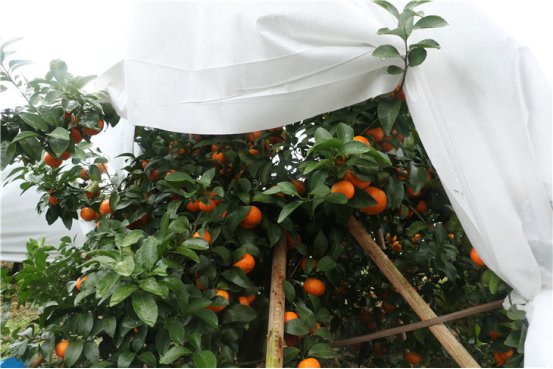Agricultural non-woven fabrics are non-woven materials designed for agricultural production. They are made of polypropylene (PP) fiber as the main raw material through hot air, needle punching or chemical bonding processes. They have the characteristics of breathability, waterproofness, corrosion resistance, pest resistance and high mechanical strength. Compared with traditional plastic films, its environmental protection, functional diversity and long life (4-5 years) make it one of the core materials for the green transformation of modern agriculture. The following is an introduction from the aspects of core functions, application scenarios, environmental advantages and industry status:
I. Core functions and characteristics
1. Environmental adaptability
-Breathable and humidification: The fiber mesh structure forms porosity, which can automatically adjust the humidity, balance the microclimate environment for crop growth, and avoid root rot.
-Insulation and cold protection: After covering, the surface temperature can be increased by 1-5℃, which can effectively resist frost. Use in winter can make vegetables 5-7 days earlier and increase production by about 15%.
- Shading protection: Different colors of non-woven fabrics have different shading effects (black> yellow> blue), which can prevent the sun from burning seedlings in summer and reduce heat loss in winter.
2. Physical and chemical properties
- Lightweight and durable: The specific gravity is only 0.9, which is lighter than cotton, tear-resistant and has balanced longitudinal and transverse strength, and the service life can reach several years.
- Antibacterial and insect-proof: Polypropylene material is naturally resistant to chemical corrosion and insect infestation, reduces the use of pesticides, and supports organic farming.
Ⅱ. Multiple application scenarios
1. Crop protection and yield increase
- Seedling cover: used for rice, vegetables, and flowers to improve the emergence rate and quality of seedlings and shorten the production cycle.
- Antifreeze and anti-frost: directly cover crops such as tea and flowers to reduce the loss of cold waves and freezing damage.
2. Soil and resource management
- Soil and water conservation: laying on the soil surface can reduce soil erosion, retain water and fertilizer, and reduce the frequency of irrigation.
- Weed control and insect control: inhibit weed growth through physical barriers and reduce the use of herbicides.
3. Facility agriculture innovation
- Greenhouse ceiling: Hanging non-woven fabrics in the greenhouse as an insulation layer can increase the temperature in the greenhouse by 3-5℃. It can be opened for ventilation during the day and closed for insulation at night.
- Replacement of plastic film: used for the outer covering of small arch sheds, saving 20% of the cost compared with straw curtains, and has a longer service life.
III. Environmental advantages and sustainable development
1. Degradable and recyclable
- Polypropylene non-woven fabrics can be naturally degraded within 90 days, with a pollution level of only 10% of plastic bags, and can be reused more than 10 times.
- Some companies develop PLA (polylactic acid)-based degradable non-woven fabrics to further reduce dependence on plastics.
2. Greening the production process
- Adopting heat recovery and zero wastewater discharge technology to reduce energy consumption and pollution.
IV. Summary
Agricultural non-woven fabrics are reshaping the production methods of modern agriculture through technological innovation and environmental protection properties. From seedling cultivation to soil management, from cold protection to weed suppression, its multifunctionality provides a reliable path for agricultural efficiency and emission reduction. With the popularization of biodegradable materials and the deepening of intelligent production processes, agricultural non-woven fabrics are expected to become one of the core pillars of global sustainable agriculture.
